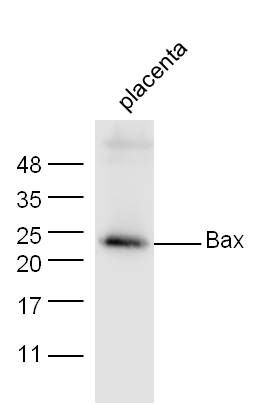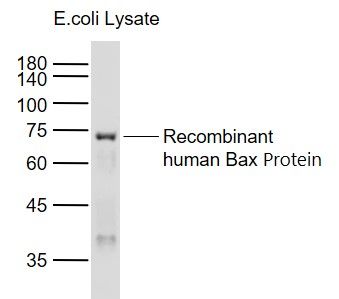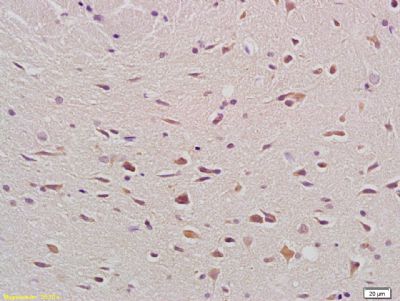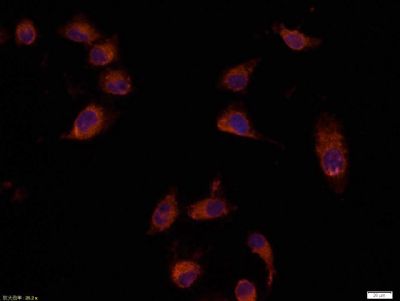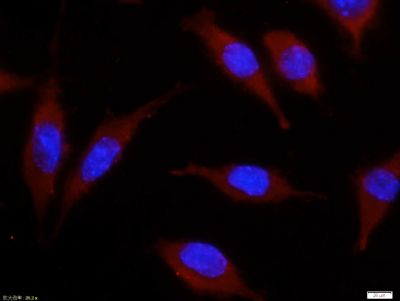Sample: Placenta(Mouse)lysates, 30ug;
Primary: Anti-Bax (SL0127M) at 1:300;
Secondary: IRDye800CW Goat Anti-Mouse IgG at 1/10000 dilution
Predicted band size : 21 kD
Observed band size : 23 kD
Sample:
Lane 1: Recombinant human Bax Protein (full length) Overexpression E.coli Lysate (Cat#: SL41243P) at 2 ug
Primary: Anti-Bax (SL0127M) at 1/1000 dilution
Secondary: IRDye800CW Goat Anti-Mouse IgG at 1/20000 dilution
Predicted band size: 70 kD
Observed band size: 73 kD
Tissue/cell: rat brain tissue; 4% Paraformaldehyde-fixed and paraffin-embedded;
Antigen retrieval: citrate buffer ( 0.01M, pH 6.0 ), Boiling bathing for 15min; Block endogenous peroxidase by 3% Hydrogen peroxide for 30min; Blocking buffer (normal goat serum,SLC0005) at 37℃ for 20 min;
Incubation: Anti-Bax Polyclonal Antibody, Unconjugated(SL0127M) 1:200, overnight at 4°C, followed by conjugation to the secondary antibody(SP-0024) and DAB(SLC0010) staining
Tissue/cell: Hela cell; 4% Paraformaldehyde-fixed; Triton X-100 at room temperature for 20 min; Blocking buffer (normal goat serum, SLC0005) at 37°C for 20 min; Antibody incubation with (Bax) polyclonal Antibody, Unconjugated (SL0127M) 1:100, 90 minutes at 37°C; followed by a conjugated Goat Anti-Mouse IgG-CY3 antibody at 37°C for 90 minutes, DAPI (blue, C02-04002) was used to stain the cell nuclei.
Tissue/cell: SH-SY5Y cell; 4% Paraformaldehyde-fixed; Triton X-100 at room temperature for 20 min; Blocking buffer (normal goat serum, SLC0005) at 37°C for 20 min; Antibody incubation with (Bax) polyclonal Antibody, Unconjugated (SL0127M) 1:100, 90 minutes at 37°C; followed by a conjugated Goat Anti-Mouse IgG-CY3 antibody at 37°C for 90 minutes, DAPI (blue, C02-04002) was used to stain the cell nuclei.
|
